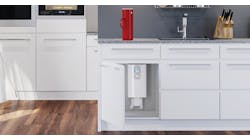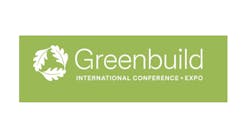Some contractors, engineers and architects think that building green is too expensive. Case in point: Just this week, I was reading The Architect’s Newspaper that I picked up a few weeks ago at NeoCon’s Buildex in Chicago, and read that Frank Gehry, a Pritzker prize-winning architect, had a few things to say about green building.
The modern architectural icon said that LEED gives credits for bogus stuff and that green buildings don’t pay back, according to an editorial piece by Alan G. Brake, Midwest editor of The Architect’s Newspaper.
Even though this comment on green building is coming from an architect, the notion of LEED being too expensive and giving credits for items that might not be the most sustainable does indeed cross over into the contracting world, including the HVAC and plumbing industries.
Of course, in the HVAC and plumbing industries, LEED points for an HVAC system and/or low-flow plumbing fixtures are revered much more than LEED points for bicycle racks and storage areas and changing rooms, but to each their own.
I’m sure in an urban environment it is important to have bike racks as part of a sustainable building since biking is a realistic transportation option. However, I have seen some green buildings in bedroom suburbs that have bike racks, but I never see any bikes on the racks since biking is not a viable transportation option. Many of these communities don’t have sidewalks or bike lanes on streets. (Trust me, you would not want to bike on some of these busy streets/highways unless you have a death wish.)
I’m not knocking bike racks that get LEED points, but I do think it’s important to be realistic when designing a sustainable building (a bike rack makes some sense if the building is in an area where people can easily bike to work) and to keep in mind that energy and water conservation should be primary goals when building green, which leads me back to the idea that building sustainably is expensive.
It’s true, these systems can be expensive and many green products can be very pricey too. Yet, when reviewing a green project, it is important to question if these systems were a “need” or “want” of the building owner/s.
Many green buildings have features that owners want, but do not need, which is fine if that is what an owner really wants to spend money on. But, building green can be done cost effectively too.
In Contractor’s July issue The Benedictine Women of Madison’s monastery is featured, which recently received U.S. Green Building Council LEED Platinum certification. The monastery earned 63 out of a possible 69 points under the LEED for New Construction Version 2.2 Rating System, making it the highest rated LEED Platinum building in the U.S. Click here to read the article that is featured in the July issue.
Based on what Frank Gehry said about green building, he would probably think that this project was way more expensive than if it was built with conventional systems and products. However, this project proves that building green can be cost effective: the cost of the project is $246 per sq. ft., including furnishings and the deconstruction of the Benedict House, which the new monastery replaces.
Mark Hanson, director of sustainable services, Hoffman LLC, who headed the design and construction management of the monastery said it best: “One of the big hindrances of green building is the myth that green buildings cost more. Some are expensive, but they don’t need to cost so much. However, it is up to the owner to decide what is really needed.”

